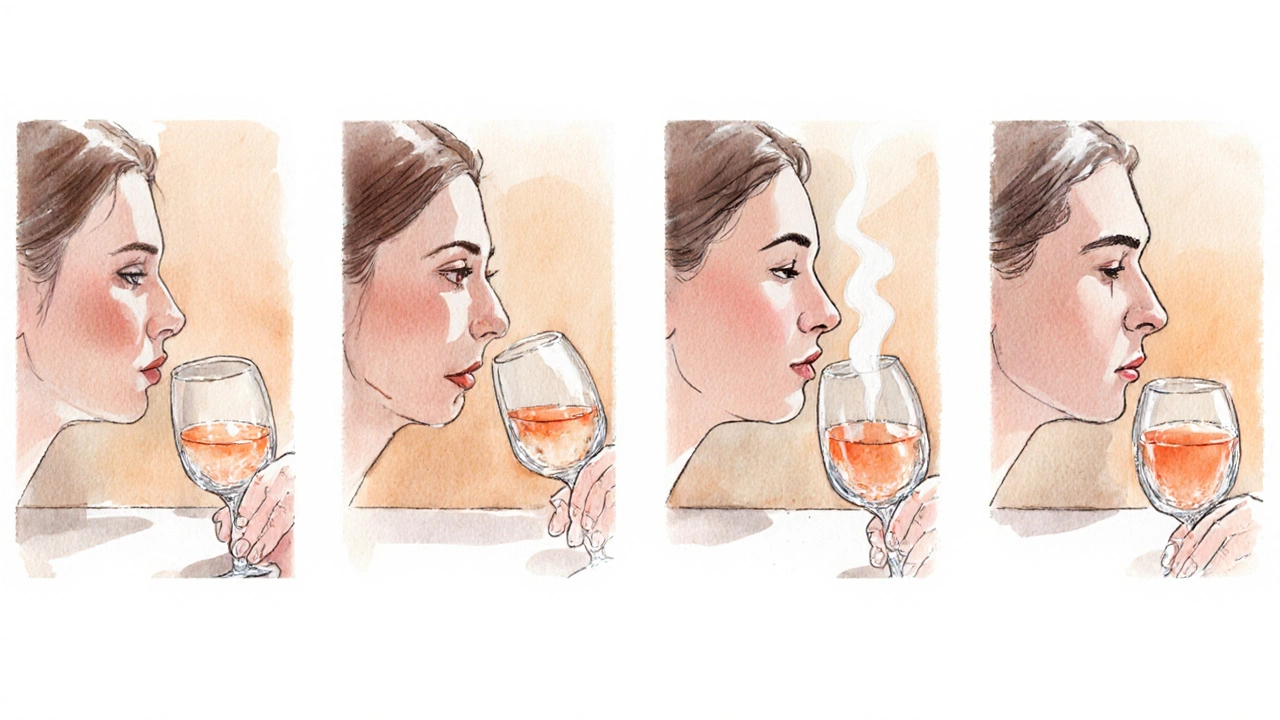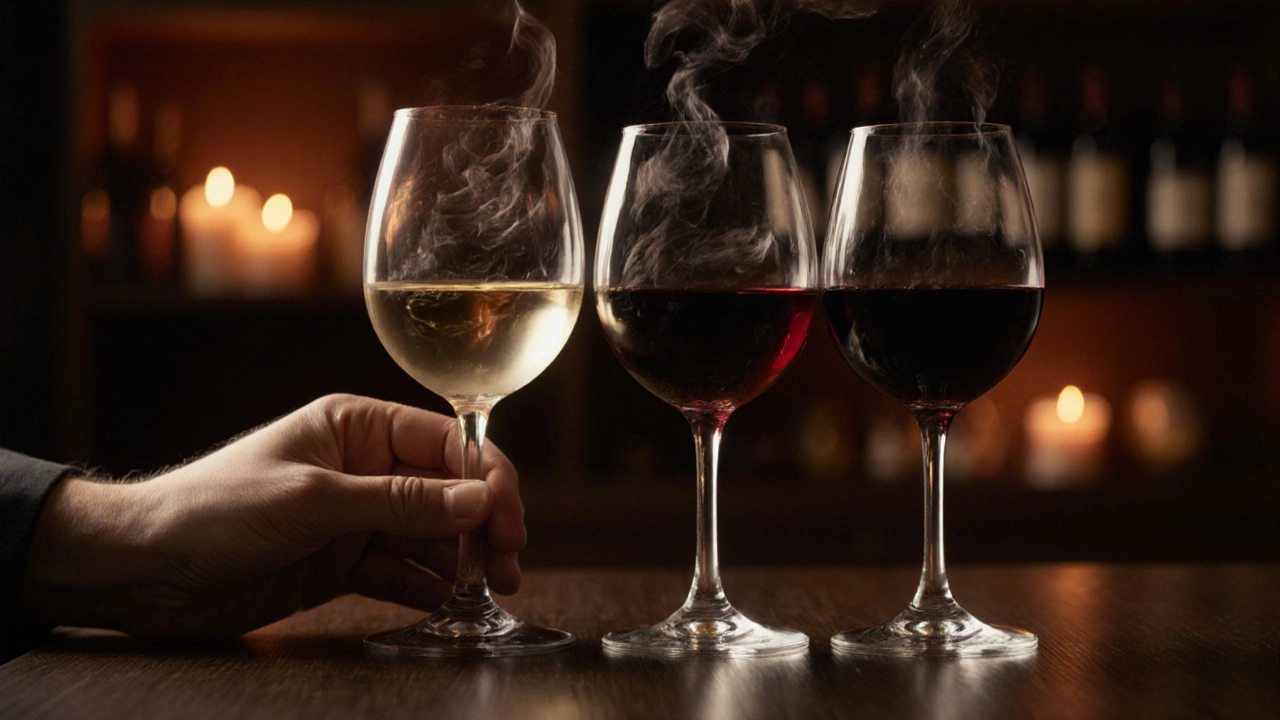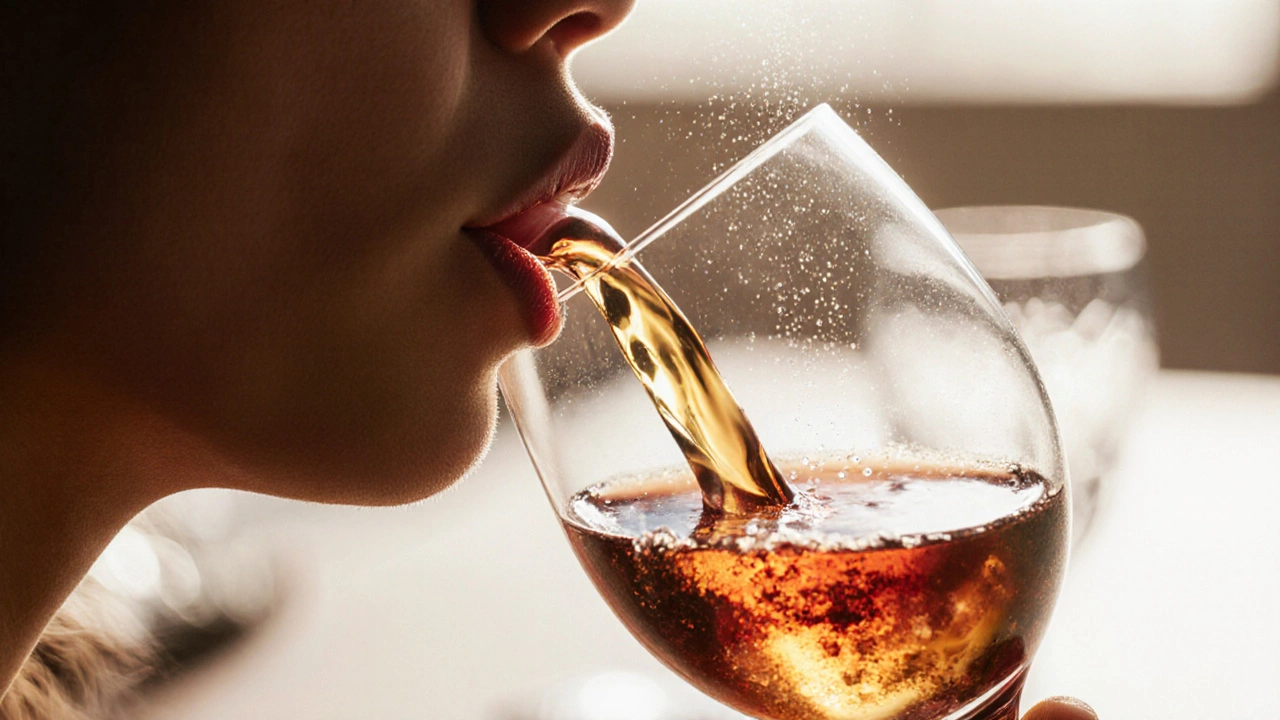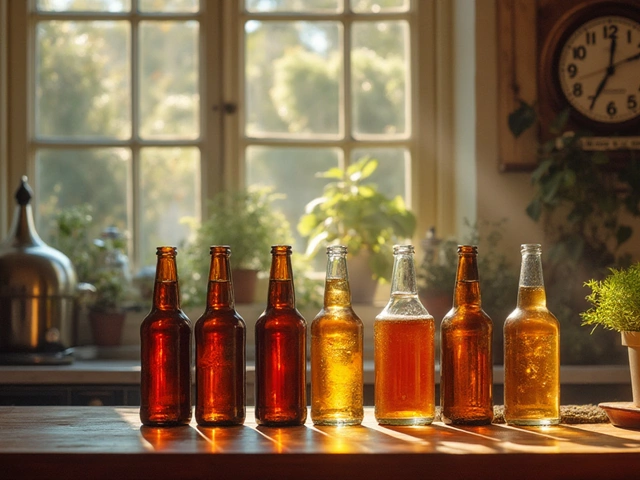Wine Swishing Technique Guide
The Science Behind Swishing
Swishing wine around your mouth increases surface area contact and incorporates air, which enhances aroma detection through the retronasal pathway.
Proper Swishing Steps
Follow these five steps for optimal wine evaluation: sip, roll, spread, exhale, and savor the full flavor profile.
Step-by-Step Swishing Guide
Your Swishing Results
Click "Start Practice Swish" to begin learning how to properly swish wine for enhanced flavor and aroma perception.
Ever wondered why wine lovers often let the liquid glide around their mouth before swallowing? That little ritual isn’t just for show - it’s a key step that unlocks flavors, aromas, and textures you’d otherwise miss.
What "swish" Actually Means
In the world of wine tasting is the sensory evaluation of wine, focusing on its aroma, flavor, and mouthfeel, “swish” refers to moving the wine around the entire oral cavity. Unlike a quick sip, you let the wine coat your tongue, gums, palate, and even the roof of your mouth. This action releases volatile compounds, letting your nose and taste buds work together.
Why Swishing Changes What You Sense
Wine is a complex mixture of alcohol, acids, sugars, tannins, and aromatic molecules. When you slosh it around, two things happen:
- Increased surface area: The wine contacts more of your mouth, exposing more receptors.
- Air incorporation: Small bubbles form, carrying aromatic compounds up to your olfactory epithelium (the part of your nose that detects smell).
Both effects amplify the aroma the scent of the wine that reaches the nose through the retronasal pathway and the palate the side of the mouth where taste buds perceive sweetness, acidity, bitterness, and umami. The result is a richer, more accurate perception of the wine’s character.
Step‑by‑Step: How to Swish Properly
- 1. Take a small sip - about a quarter of an ounce. You don’t need a full glass.
- 2. Let the wine hit the teeth - this warms it slightly and starts the release of tannins.
- 3. Roll it over your tongue - move it from front to back, letting it touch the tip, sides, and roof.
- 4. Spread it to the cheeks - gently puff your cheeks and let the wine coat the inner walls.
- 5. Exhale softly through the nose - this activates the retronasal route and lets aromas flood back.
That’s it. A full 5‑second swish is enough; you don’t need to hold the liquid for minutes.

What You’ll Notice: The Five Pillars of Swish Benefits
Swishing helps you evaluate the core components that make up a wine’s profile. Below are the main pillars, each introduced with microdata for easy reference.
Fruit flavor the sweet and sour notes derived from the grape variety, such as cherry, blackberry, or citrus becomes clearer because the wine’s sugars interact with your taste buds across the whole tongue.
Acidity the bright, tart sensation that balances sweetness and gives wine its refreshing edge is detected more evenly when the wine reaches the back of the palate.
Tannin the grainy, drying compounds from grape skins and stems that add structure is felt fully when the wine hugs the gums and teeth.
Body the weight or fullness of the wine on the palate, ranging from light to full is perceived as the wine coats the mouth’s surface.
Finish the lingering flavors after you swallow, indicating quality and balance is extended because more flavors are released during the swish.
Common Mistakes and How to Avoid Them
Even seasoned tasters slip up. Here are the usual errors and quick fixes:
- Over‑swishing: Going beyond 10 seconds can cause bitterness to dominate. Keep it brief.
- Too much air: Aggressive blowing introduces oxidation, muting subtle aromas. Exhale gently.
- Skipping the palate: Only holding wine on the tongue misses the gum and tooth receptors that reveal tannin and texture.
- Using a dirty glass: Residual soap or wine can mask aromas. Always use a clean, crystal clear wine glass a vessel designed to enhance a wine’s bouquet and flavor.
Swish vs. Sip vs. Swirl: A Quick Comparison
| Action | Primary Goal | Typical Duration | Key Sensory Impact |
|---|---|---|---|
| Swirl | Oxygenate the wine, release volatile aromatics | 2-3 seconds | Greater aroma intensity |
| Swish | Coat the entire mouth, integrate taste and aroma | 5-7 seconds | Full flavor profile, balanced acidity and tannin |
| Sip | Quick taste, assess immediate impression | 1-2 seconds | Initial fruit and sweetness notes |

When to Swish: Which Wines Benefit Most
Not every glass needs a full swish. Here’s a quick guide:
- Red wines with high tannin (Cabernet Sauvignon, Nebbiolo) - swishing reveals structure and softness.
- Full‑bodied whites (oaked Chardonnay, White Rioja) - the technique highlights buttery texture and oak nuances.
- Sparkling wines - usually just a quick sip; carbonation overruns the mouth if you linger too long.
- Light, aromatic whites (Riesling, Sauvignon Blanc) - a brief swirl + short swish is enough to catch fruit and herb notes.
Putting It All Together: A Sample Tasting Session
Imagine you’re at a tasting room with three wines: a light Pinot Noir, a robust Syrah, and a crisp Pinot Grigio. Here’s how you’d apply the swish method:
- Start with the Pinot Grigio. Take a sip, swirl, and do a quick 3‑second swish. Note the citrus, crisp acidity, and clean finish.
- Move to the Pinot Noir. This one benefits from a slightly longer swish (5 seconds) to sense its delicate tannins, red‑fruit aroma, and silky body.
- Finish with the Syrah. Give it a full 7‑second swash to expose its bold pepper, dark‑berry fruit, and firm tannic grip.
The progression from light to heavy lets each wine shine without the previous one’s flavors lingering.
Frequently Asked Questions
Do I have to swish every wine I taste?
No. Light, high‑acid white wines and sparkling wines are usually best enjoyed with a quick sip. Heavier reds and full‑bodied whites benefit most from a brief swish to expose tannins, body, and finish.
Is swishing the same as swirling?
Swirling happens in the glass to oxygenate the wine and release aroma. Swishing happens inside your mouth to coat the palate and blend aroma with taste. Both steps are useful, but they target different senses.
Can swishing damage my teeth or gums?
A gentle swish for a few seconds is safe for healthy mouths. If you have sensitive teeth, use a slightly cooler wine and avoid excessive pressure.
Why does my wine taste different after I’ve swished?
Swishing releases more aromatic compounds and balances the interaction of acidity, tannin, sweetness, and body, giving you a fuller, more nuanced perception.
Should I spit the wine after swishing?
In a professional tasting you’ll usually spit to stay objective and avoid intoxication. At home, feel free to swallow if you’re enjoying the experience.


